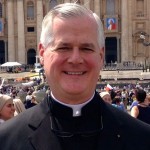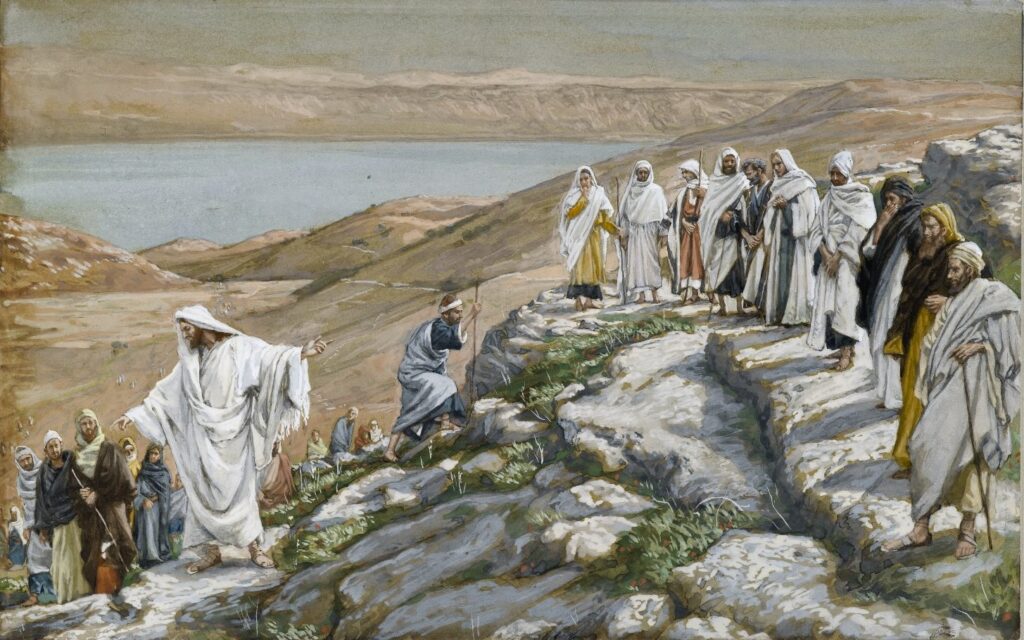
Fr. Gerald E. Murray
The Rev. Gerald E. Murray, J.C.D. is a canon lawyer and the pastor of Holy Family Church in New York City. His new book (with Diane Montagna), Calming the Storm: Navigating the Crises Facing the Catholic Church and Society, is now available.
The Synod of Bishops, as Pope Francis remarked in his 2014 Letter to Cardinal Lorenzo Baldisseri, was established by Pope St. Paul VI to meet “the need to strengthen by closer bonds the union of the Bishop of Rome with the Bishops whom the Holy Spirit had constituted to govern the Church of God.” He added that “it is necessary more than ever to further revitalize the close relationship between all the Pastors of the Church. . .there is no doubt that the Bishop of Rome is in need of the presence of his Brother Bishops, of their guidance and of their prudence and experience.”
To promote this revitalization “the Successor of Peter must proclaim to all who ‘Christ, the Son of the Living God’ is, and at the same time he must pay attention to what the Holy Spirit inspires on the lips of those who – accepting the word of Jesus who declares: ‘you are Peter’ (cf. Mt 16:16-18) – fully participate in the Apostolic College.” It is this “affective and effective communion which constitutes the Synod of Bishops’ primary purpose.”
The Synodal Assemblies “have offered the Successor of Peter valuable help and guidance in order to safeguard and increase the faith, in order to courageously offer the integrity of Christian life and strengthen the discipline of the Church.”
The institution above described, however, no longer exists as of April 26, 2023, the day the Press Office of the General Secretariat of the Synod issued an unsigned press release announcing that lay people would now be appointed by Pope Francis as voting members of the October assembly of the Synod on Synodality. The press release claims – incredibly – that including laity as full and equal members in an assembly of ordained bishops does not alter the nature of this assembly: “These modifications which are warranted within the context of the synodal process will not, however, change the episcopal nature of the Assembly.”
This is obviously absurd. Introducing as voting members people who are not bishops into an institution established, in Pope Francis’ own words, “to strengthen by closer bonds the union of the Bishop of Rome with the Bishops whom the Holy Spirit had constituted to govern the Church of God” radically changes the nature of the synodal assembly. To claim otherwise is to engage in double-talk: “We are pleased to announce an important change; nothing has changed.”
It should be noted that the canonical changes announced cannot be validly put into effect by means of a press release. The abrogation of canon 342, §1 of the Code of Canon Law and of various provisions of the Apostolic Constitution governing the Synod of Bishops, Episcopalis Communio, is not within the powers of the Press Office of the Synod.
Why are lay people being incorporated into a meeting of the Synod of Bishops?
This decision reinforces the solidity of the process as a whole, by incorporating into the Assembly the living memory of the preparatory phase, through the presence of some of those who were its protagonists, thus restoring the image of a Church-People of God, founded on the constitutive relationship between common priesthood and ministerial priesthood, and giving visibility to the circular relationship between the prophetic function of the People of God and the discernment function of the Pastors.
A further claim is made that “It is therefore in the role/function of memory that the presence of non-bishops is included, and not in that of representation. In this way, the specifically episcopal nature of the Synodal Assembly is not affected, but rather is confirmed.”

So, the laity present does not represent others, they are simply there because they participated in the various synodal discussion phases. They should possess “general culture and prudence” and “knowledge, both theoretical and practical.” There is no requirement that they must be believing and practicing Catholics.
Some of us recall that the Synod Vademecum stated that “[s]pecial care should be taken to involve. . . Catholics who rarely or never practice their faith” in the synodal local meetings. In fact, “no one – no matter their religious affiliation – should be excluded from sharing their perspective and experiences, insofar as they want to help the Church on her synodal journey of seeking what is good and true.”
Thus, a non-believing non-bishop could be chosen to be a member of the synod, enjoying an equal vote with those appointed by Christ to be the shepherds of His Church.
The document also assures us that “the episcopal nature of the Synodal Assembly is not affected, but rather is confirmed” because non-bishops will be “less than 25 percent of the total number of Assembly members.” I wonder what percentage of non-bishops it would take to vitiate the episcopal nature of the Synodal Assembly. The pope is free to appoint, apart from the stipulated 70 non-bishops, as many additional non-bishop members as he chooses, so the percentage could be higher than 25 percent.
The 70 non-bishop members appointed by Francis will be taken from lists of 20 names submitted by each of the 7 largely geographically determined supra-diocesan regional assemblies. It seems likely that each region will thus have 10 non-bishop members at the synod representing the people of that region.
If the non-bishop members of the Synodal Assembly do not have a role of “representation,” why is it “requested that 50 percent of them be women and that the presence of young people also be emphasized”? This looks like an attempt to show that women as a “demographic” are being fairly represented. And why would young people get special mention, if their presence is not meant to signal that they represent all youth in the Church? No similar set-asides are called for in the press release for priests, deacons, monks, contemplative nuns, daily Mass-goers, catechists, members of new movements, charismatics, people who attend the Traditional Latin Mass, etc.
The “prophetic function of the People of God” is counterposed to the “discernment function of the Pastors.” This dichotomy implies that the role of bishops is to listen to the collective voice of the laity, treating them as prophets. Rather, bishops – as shepherds – exercise the roles of priest, prophet, and king for the flock assigned to them by Christ.
The October Synod will be a meeting of bishops and non-bishops as equals. It is no longer an expression of the “union of the Bishop of Rome with the Bishops whom the Holy Spirit had constituted to govern the Church of God.” As such it poses a grave threat to the proper understanding of the nature of the Church as a hierarchical society composed of the ordained shepherds and the lay faithful they are called to lead.
The appointment of non-bishop members to a synod of bishops is like having non-cardinal members in the College of Cardinals. No one could plausibly claim that having non-cardinals vote at the next conclave would not radically change the nature of that conclave. The same logic applies here.